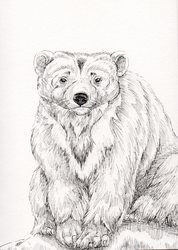Sign In
CloseTotem of the day is Hedgehog! Change up your routine for a day or two to break yourself out and relax to refresh your mind and body. It will be an appropriate time to let yourself be curious and investigative towards any idea that may cross your mind. You are heading into a time of creation, curiosity, and expression so let yourself enjoy your life and create without stress. Spend time in nature possibly gardening or planting. The Hedgehog totem is known for it's connection to intelligence, resourcefulness, protection, and vitality. This totem can remind us that we have the skills to protect and ground ourselves. Hedgehog's have a strong connection to the earth with their low to the ground bodies and grounding, protective curl of their bodies. They also are considered a solar animal due to the splayed outward spikes being connected with the rays of the sun. In central Asia and areas of Iran, the Hedgehog is associated as giving the gift of fire, fertility, and agricultural abundance. Being nocturnal, they are also connected with dreams, visions, and psychic abilities. Romans and Greeks saw intelligence as given from the hedgehog due to their habit of knocking grapes off the vine, rolling in them to spear them on their spikes, and walking away to eat them later. Hedgehog reminds us our uniqueness is a gift that can help us to always be protected, grounded, and resourceful. People who connect with Hedgehog are nurturing, wise, and gentle souls who enjoy living in areas where they can garden or work with the earth. These individuals can sometimes be misunderstood or forgotten by others which can lead to them feeling alone, however, remember that you are unique and beautiful no matter what others make you feel. This uniqueness is a blessing and hedgehog types often are sought out for their wisdom and advice. Anyone with this totem is connected strongly with feminine energies and influences from the Goddess.
Hedgehog, Atelerix Albiventris, are omnivorous mammals that can live up to 6 years in the wild. These small animals are thought to originate over 15 million years ago, making them one of the oldest mammals on earth with very little change over all of that time. Today, they are found primarily in Europe, Asia, and Africa with introductions into New Zealand and popularity as a domesticated pet in other areas. They will prefer a range of habitats depending on where they live such as forests, savannas, deserts, scrublands, and suburban gardens. There are approximately 16 species of hedgehog with none of them being native to North America or Australia. The largest species of Hedgehog is the European Hedgehog which can grow to weigh over 4 lbs although usually growing to just over 3 lbs with a length of 10 inches. On average, hedgehogs will grow to weigh less than a pound. They have sharp spikes that work as defense when threatened by predators by curling into a tight, spikey ball. These are actually hollow hairs made of keratin, which makes up hair and human fingernails. Unlike porcupines, however, these pikes are not removeable and do not contin any sort of poison or barbs. The hedgehog's spikes are solely for defensive curlings. Some species, such as those found in desert regions, will try to outrun predators first before resorting to curling into a ball. Loud creatures, hedgehogs will communicate with grunts, snuffles, and loud squeals. For dens, Hedgehogs will sometimes use old burrows left over from other animals or hunker down between rocks, but they will usually dig long burrows themselves. These burrows can be as long as 20 inches with nests created from branches, vegetation, and leaves. They will sleep up to 18 hours a day in these dens with nocturnal habits that have been most active during the night. Having poor eyesight, they search for food using their sharp hearing and sense of smell. Unable to handle adverse weathers, hedgehogs will sleep through drought, heat, and cold weather to protect themselves. This habit of sleeping through heat and drought is called Aestivation and, in areas with more moderate climates, hedgehogs will not need to do this and often have more active lifestyles. The majority of hedgehogs will hibernate through the winter. The diet of a hedgehog consists of insects, snails, worms, frogs, reptiles, roots, snakes, fruit, fungi, centipedes, and more. They will hunt for food by rutting through vegetation and under dirt to find the wide range of foods they will ingest. Often creating a snuffling, snorting noise while searching. In one night a single hedgehog can eat up to a third of their own body weight. When breeding, larger hedgehogs will have litters of around 4 babies whereas the small ones will have larger litters of up to 7 babies. They will only give birth once a year to babies called hoglets. Hoglets weigh less than an ounce and are born blind without spikes. After a few days, the babies will get a thorough cleaning from their mother and their spikes will begin to grow through their skin. They will move out on their own around 7 weeks old and fully mature around 11 months.
Submission Information
- Views:
- 297
- Comments:
- 0
- Favorites:
- 0
- Rating:
- General
- Category:
- Visual / Traditional




